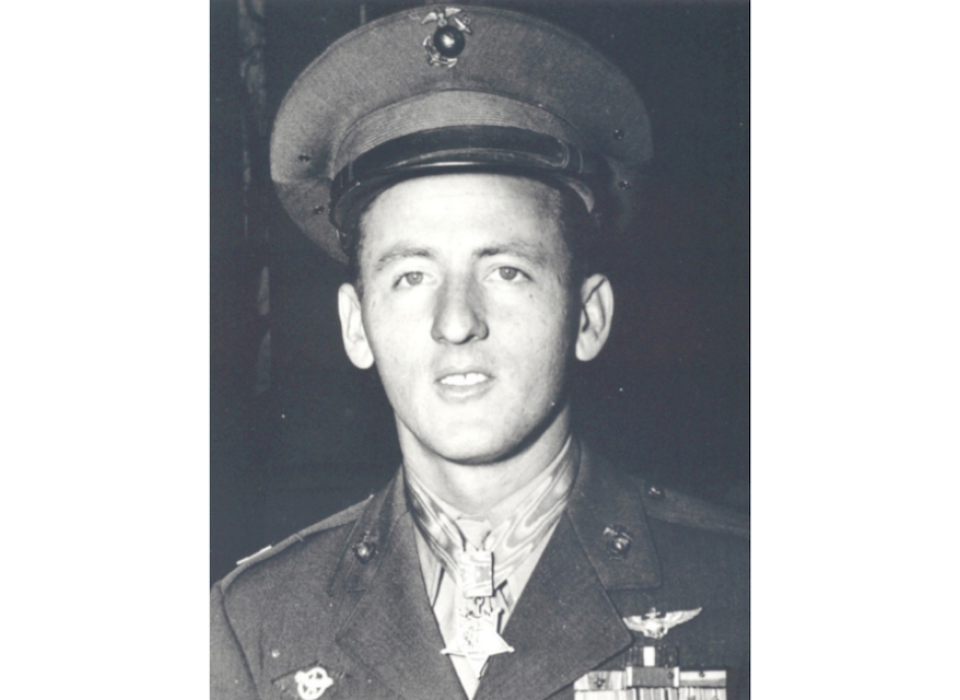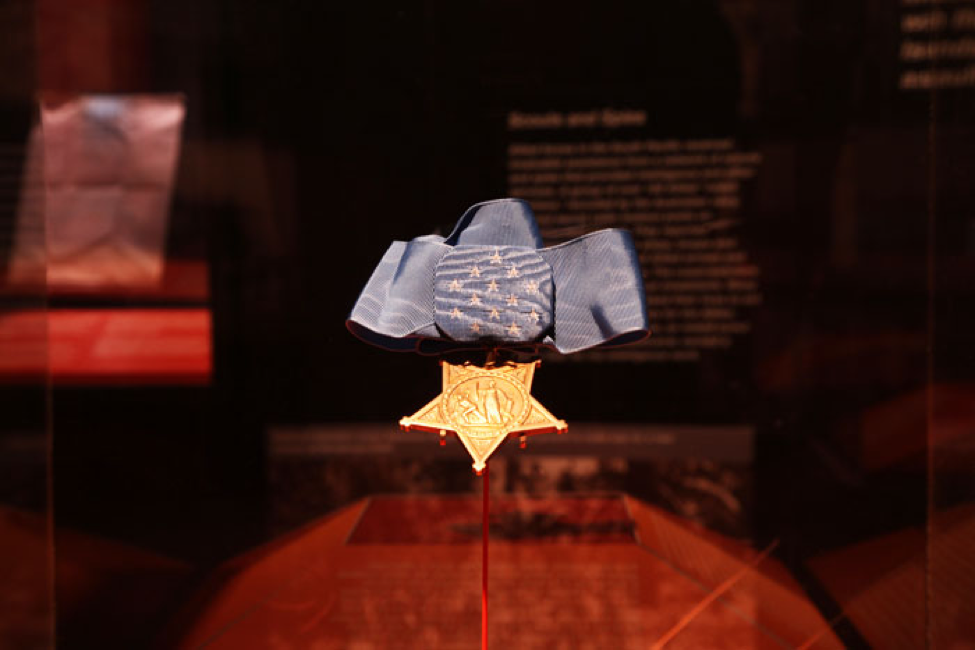Top image: US Naval History and Heritage Command photo.
Born in Lockport, Louisiana, on February 15, 1921, Jefferson Joseph DeBlanc attended Southwestern Louisiana Institute, studying both math and physics. In his junior year, he left his academic endeavors and enlisted in the US Navy, enrolling in the Aviation Cadet Program in October 1942. He earned his wings at Naval Air Station Corpus Christi and then opted to join the Marine Corps as a Second Lieutenant. Eventually assigned to VMF 112 flying F4F “Wildcat” fighters, he deployed overseas.
DeBlanc arrived at Guadalcanal on November 1, 1942, two months after the Marines’ initial landing on the island. Despite his short time there, he wasted no time downing Japanese aircraft, scoring two victories on November 12 and then again on December 18. However, it was on January 31, 1943, when he went “above and beyond the call of duty” as the flight lead of six F4Fs escorting a formation of SBD “Dauntless” dive bombers on a strike over Kolombangara. His action in the mission is described in his citation:
“For conspicuous gallantry and intrepidity at the risk of his life above and beyond the call of duty as leader of a section of six fighter planes in Marine Fighting Squadron 112, during aerial operations against enemy Japanese forces off Kolombangara Island in the Solomon group, 31 January 1943. Taking off with his section as escort for a strike force of dive bombers ordered to attack Japanese surface vessels, 1st Lt. DeBlanc led his flight directly to the target area where, at 14,000 feet, our strike force encountered a large number of Japanese Zeros protecting the enemy’s surface craft. In company with the other fighters, 1st Lt. DeBlanc instantly engaged the hostile planes and aggressively countered their repeated attempts to drive off our bombers, persevering in his efforts to protect the diving planes and waging fierce combat until, picking up a call for assistance from the dive bombers, under attack by enemy float planes at 1,000 feet, he broke off his engagement with the Zeros, plunged into the formation of float planes and disrupted the savage attack, enabling our dive bombers to complete their runs on the Japanese surface disposition and withdraw without further incident. Although his escort mission was fulfilled upon the safe retirement of the bombers, 1st Lt. DeBlanc courageously remained on the scene despite a rapidly diminishing fuel supply and, boldly challenging the enemy’s superior number of float planes, fought a valiant battle against terrific odds, seizing the tactical advantage and striking repeatedly to destroy three of the hostile aircraft (two float planes and one Zero) and to disperse the remainder. Prepared to maneuver his damaged plane back to base, he had climbed aloft and set his course when he discovered two Zeros closing in behind. Undaunted, he opened fire and blasted both Zeros from the sky in a short, bitterly fought action which resulted in such hopeless damage to his own plane that other Zeros entering the fight set his aircraft on fire forcing him to bail out over enemy waters between Vella Lavella and enemy-held Kolombangara. A gallant officer, a superb airman, and an indomitable fighter, 1st Lt. DeBlanc had rendered decisive assistance during a critical stage of operations, and his unwavering fortitude in the face of overwhelming opposition reflects the highest credit upon himself and adds new luster to the traditions of the U.S. Naval Service.”
After bailing out, DeBlanc swam ashore. He survived by eating coconuts for three days and was then captured by a tribe of Native Islanders on Vella Lavella. He was traded to another tribe for a 10-pound sack of rice. Told not to show fear to Natives, when one of them grabbed his belt buckle, he responded by grabbing one of their spears. He retained possession of the weapon until his passing. DeBlanc went on to fly combat missions in the Marshall Islands and Okinawa Campaigns.
After the war, he resumed his academic studies while remaining a member of the Marine Corps Reserve, retiring as a Colonel in 1972. He passed on November 22, 2007, and is buried at St Michael’s Cemetery in Saint Martinville, Louisiana. The Museum is proud and honored to have DeBlanc’s spear that he acquired during his time with the native tribesmen and his Medal of Honor on display.
John Curatola, PhD
John Curatola, PhD, is the Samuel Zemurray Stone Senior Historian at the Jenny Craig Institute for the Study of War and Democracy.
Cite this article:
MLA Citation:
APA Citation:
Chicago Style Citation:









![Max Fuchs, New York City cantor, sings as Rabbi Sydney [sic] Lefkowitz, Richmond, VA, conducts the first Jewish services from Germany.](/sites/default/files/styles/max_650x650/public/2025-10/image1.jpg)

